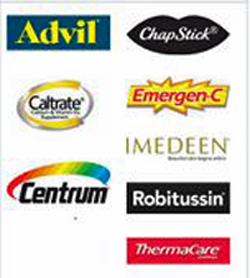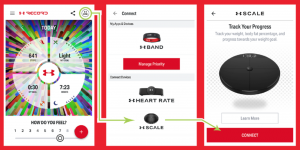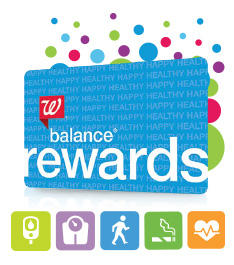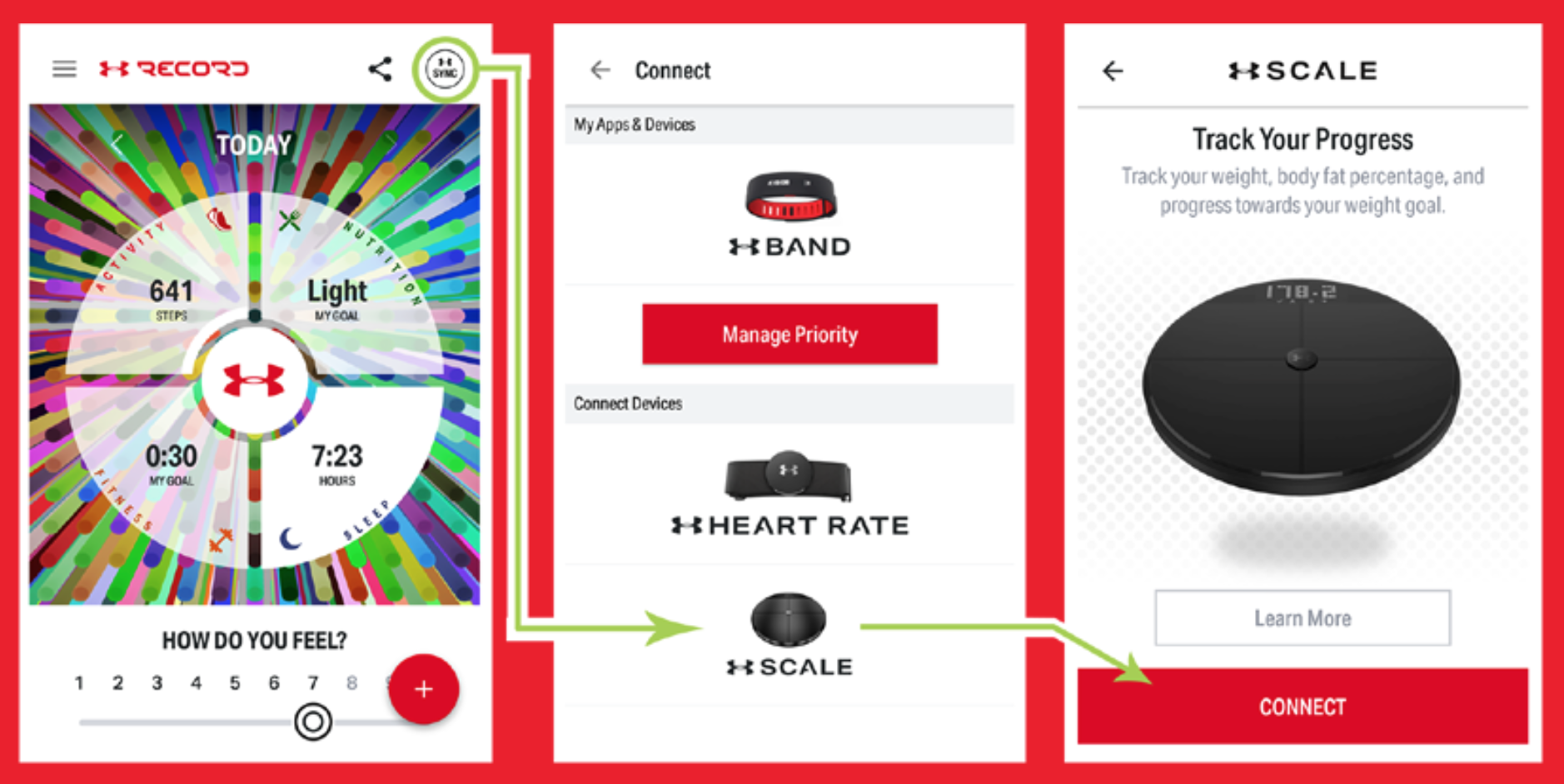 How can digital technologies enable self-healthcare in novel ways? This was the theme of a meeting sponsored by Pfizer Consumer Healthcare and hosted by Google, with the title, “Advancing Consumer Health through New Technology and Next Generation OTC Healthcare” held on 12th April 2016 at Google offices in Manhattan’s Chelsea neighborhood.
How can digital technologies enable self-healthcare in novel ways? This was the theme of a meeting sponsored by Pfizer Consumer Healthcare and hosted by Google, with the title, “Advancing Consumer Health through New Technology and Next Generation OTC Healthcare” held on 12th April 2016 at Google offices in Manhattan’s Chelsea neighborhood.
Pharmaceutical brand drugs switching to over-the-counter packaged goods, the Cellscope Otoscope used by parents checking their young children’s earaches, connected shoes and earbuds for athletic enhancement, and omni-channel retail shopping….these are a few of the signals we see emerging to enable consumers’ to drive healthy behaviors, wellness and self-healthcare. Speakers from companies covering these market segments presented their views on health care consumers’ demand and use of digital tech for their own and their families’ health.
David Pogue, technology raconteur, moderated the session, kicking the discussion off with the scenario of a patient recently admitted to an ER with chest pain where clinicians took advantage of the patient’s Fitbit data. Based on that patient-generated data, the doctors were able to connect the data-dots in time to prevent the fellow from dying. Pogue ticked off many examples of tracking devices, covering sunlight exposure, posture, weight and BMI, heart-tracking t-shirts, smart shoes, earbuds, forks to slow down eating, and finally the SexFit Bondero for the gentlemen-folk.
These devices all generate data, lots of it, and Pogue is frustrated that cures for some cancers are in those terabytes of datapoints. “We are running the biggest clinical trial in human history – but we cannot get into the data,” Pogue complained. However, this is now beginning to happen, he noted as the optimist he is, citing Apple’s ResearchKit – a free open source program for medical researchers to use for developing apps and algorithms to conduct medical studies. This technology, Pogue said, has begun to turbocharge clinical research studies, attracting hundreds of more patients to studies in short time-frames compared with the traditional way of (slowly, slowly) recruiting subjects for clinical trials.
Pogue noted the change in the balance of power between patients and the medical profession — “there’s some resistance in the medical establishment,” he said, bringing up an image of Dr. Eric Topol’s book, “The Patient Will See You Now.” Pogue finally quoted from a 2013 New Yorker article asserting, “The era of paternalistic medicine….has ended.”
 “The Future of Self Care and OTCs” was the topic explored by Suneet Varma, Global President and GM, Pfizer Consumer Health. Varma’s company represents popular over-the-counter (OTC) medicine brands that enable people to care for themselves at home, at work, and on the go — outside of the doctor’s office and hospital. For example, the company’s Advil, Caltrate, Centrum, Chapstick, Dimetapp, and Nexium, among others, have tremendously scaled global impact on millions of people compared with branded prescription drugs with narrower market sizes. “Consumers want to take this [self-care] power over their own lives,” Varma observed, emphasizing this consumer health trend is a global phenomenon “exploding around the world.” On the digital front, Pfizer has begun to adopt the use of mobile phones in clinical study support (“mClinical”), using smart labels for consumers to scan and learn about drugs’ side effects, and more innovative uses such as the BeLive Lyrica Patient Diary that couples with wearable tech for managing pain. On the self-care front, Varma also anticipates more Rx-to-OTC drug switches which would put more medical products into consumers’ hands in front of the pharmacy counter accessible without a clinician’s prescription.
“The Future of Self Care and OTCs” was the topic explored by Suneet Varma, Global President and GM, Pfizer Consumer Health. Varma’s company represents popular over-the-counter (OTC) medicine brands that enable people to care for themselves at home, at work, and on the go — outside of the doctor’s office and hospital. For example, the company’s Advil, Caltrate, Centrum, Chapstick, Dimetapp, and Nexium, among others, have tremendously scaled global impact on millions of people compared with branded prescription drugs with narrower market sizes. “Consumers want to take this [self-care] power over their own lives,” Varma observed, emphasizing this consumer health trend is a global phenomenon “exploding around the world.” On the digital front, Pfizer has begun to adopt the use of mobile phones in clinical study support (“mClinical”), using smart labels for consumers to scan and learn about drugs’ side effects, and more innovative uses such as the BeLive Lyrica Patient Diary that couples with wearable tech for managing pain. On the self-care front, Varma also anticipates more Rx-to-OTC drug switches which would put more medical products into consumers’ hands in front of the pharmacy counter accessible without a clinician’s prescription.
 Dr. Natasha Burgert, a pediatrician based in Kansas City and writes the KCKids Doc blog, Dr. Burgert discussed connected pediatrics. All areas of her practice, including acute care, well care, and chronic care, have been impacted by digital technologies. She asks the question, what will be necessary for technology to be sustainable in the current practice environment? For well visits, Dr. Burgert has seen the growth of parents bringing online-generated information into the exam room, and has welcomed this development, noting that “it’s nice to have families be prepared.” In the last 5 years, Dr. Burgert sees this phenomenon as bringing a more active discussion into the exam room, essentially welcoming a “new member” into the dialogue in her words. On the chronic care front, Dr. Burgert has had some success in prescribing apps to young patients who can use them for such lifestyle behaviors as weight control. In this instance, Dr. Burgert has seen patients use My Fitness Pal and activity trackers. In one instance, a patient kept the weight off and knew her pediatrician was “watching” via the My Fitness Pal app’s data which was shared; this sentinel effect of the doctor’s watchful eye was helpful to that patient. But this was not the case with another young patient with eating issues, for whom “the app made it so easy” to track every calorie to the point where the patient developed anorexia nervosa. “The ability to catch crisis points will be critical to the next generation of chronic care management tools,” Dr. Burgert believes.
Dr. Natasha Burgert, a pediatrician based in Kansas City and writes the KCKids Doc blog, Dr. Burgert discussed connected pediatrics. All areas of her practice, including acute care, well care, and chronic care, have been impacted by digital technologies. She asks the question, what will be necessary for technology to be sustainable in the current practice environment? For well visits, Dr. Burgert has seen the growth of parents bringing online-generated information into the exam room, and has welcomed this development, noting that “it’s nice to have families be prepared.” In the last 5 years, Dr. Burgert sees this phenomenon as bringing a more active discussion into the exam room, essentially welcoming a “new member” into the dialogue in her words. On the chronic care front, Dr. Burgert has had some success in prescribing apps to young patients who can use them for such lifestyle behaviors as weight control. In this instance, Dr. Burgert has seen patients use My Fitness Pal and activity trackers. In one instance, a patient kept the weight off and knew her pediatrician was “watching” via the My Fitness Pal app’s data which was shared; this sentinel effect of the doctor’s watchful eye was helpful to that patient. But this was not the case with another young patient with eating issues, for whom “the app made it so easy” to track every calorie to the point where the patient developed anorexia nervosa. “The ability to catch crisis points will be critical to the next generation of chronic care management tools,” Dr. Burgert believes.
The one thing technology cannot provide, she strongly asserts, is confidence in ourselves for a lot of self-care such as knowing how to deal with an infant’s high temperature at 3 am. We must, in her opinion, “Build tools for our hunger that recognize we are individual and special,” and to “facilitate channels for reassurance when we need to know everything is OK.” The magic is not in an app or wristband. “We need to look at the analog world….optimizing the human connection for health,” Dr. Burgert concluded.
 Doug Ziewacz of Under Armour discussed healthy habits in connecting consumers to health apps and tools, and to the community of over 165 million members that fall under the company’s data ecosystem (which includes consumers using the apps Map My Fitness, Endomondo, and My Fitness Pal). He sees moving from a “restrictive” to a “prescriptive” approach to help can propel the nation and the world at large toward healthy behaviors. The company’s mission is to make all athletes better through passion, design, and a relentless pursuit of innovation, Ziewacz explained. While the organization’s heritage is in team sports, today, it’s all about data to help consumers maximize what they do. There are 3 kinds of “Armour” in the company’s strategic paradigm: Emotional, Physical and Informational. The company is evolving the Healthbox data and device ecosystem which cover four quadrants — sleep, nutrition, fitness, and activity. Today, Under Armour can coach the user to workout based on their diet (“fuel”) and other metrics. Under Armour recently announced an affiliation with the IBM Watson Health program, allying for cognitive coaching. Ziewacz envisions a day when “hardware will fall away,” and we’ll be using embeddable technology. In the meantime, everything Under Armour makes will be connected going forward.
Doug Ziewacz of Under Armour discussed healthy habits in connecting consumers to health apps and tools, and to the community of over 165 million members that fall under the company’s data ecosystem (which includes consumers using the apps Map My Fitness, Endomondo, and My Fitness Pal). He sees moving from a “restrictive” to a “prescriptive” approach to help can propel the nation and the world at large toward healthy behaviors. The company’s mission is to make all athletes better through passion, design, and a relentless pursuit of innovation, Ziewacz explained. While the organization’s heritage is in team sports, today, it’s all about data to help consumers maximize what they do. There are 3 kinds of “Armour” in the company’s strategic paradigm: Emotional, Physical and Informational. The company is evolving the Healthbox data and device ecosystem which cover four quadrants — sleep, nutrition, fitness, and activity. Today, Under Armour can coach the user to workout based on their diet (“fuel”) and other metrics. Under Armour recently announced an affiliation with the IBM Watson Health program, allying for cognitive coaching. Ziewacz envisions a day when “hardware will fall away,” and we’ll be using embeddable technology. In the meantime, everything Under Armour makes will be connected going forward.
 Greg Orr of Walgreens described the consumer’s omni-channel journey in health care. The company has been building out digital partnerships — explaining that the “wall of OTC” medicines represents essentially “shelves of partnerships” with APIs (application user interfaces). Customers today demand personalization, fulfillment, and seek wellness. To drive consumer satisfaction, Walgreens seeks to be in consumers’ every-touchpoint, online, offline, providing care by a pharmacist and care through a virtual doctor via the Walgreens app’s MDLive (telehealth) link. The drug store chain is building more programs “beyond the pill,” the phrase pharma and pharmacy use these days to help drive greater value beyond one prescription. For example, Walgreens’ app enables pill reminders, chats with pharmacists 24×7 (“can I take St. John’s wort with my lisinopril prescription” a patient might ask, Orr posed), and an immunizations app that helps parents track their children’s vaccine schedule based on CDC guidelines. Walgreens also launched an app on the Apple Watch. Walgreens Balance Rewards program (of which I am an enthusiastic member) is a loyalty app that earns consumers points for both purchases in the store as well as linking activity trackers and digital medical devices to the app (such as Withings scales, Fitbit wristbands, and various digital glucometers). Walgreens also partners with WebMD for Your Digital Health Advisor wellness coaching, smoking cessation support, and other clinical coaching programs. The company is publishing significant results through the use of these apps and digital health tools, such as improving medication compliance and driving weight loss.
Greg Orr of Walgreens described the consumer’s omni-channel journey in health care. The company has been building out digital partnerships — explaining that the “wall of OTC” medicines represents essentially “shelves of partnerships” with APIs (application user interfaces). Customers today demand personalization, fulfillment, and seek wellness. To drive consumer satisfaction, Walgreens seeks to be in consumers’ every-touchpoint, online, offline, providing care by a pharmacist and care through a virtual doctor via the Walgreens app’s MDLive (telehealth) link. The drug store chain is building more programs “beyond the pill,” the phrase pharma and pharmacy use these days to help drive greater value beyond one prescription. For example, Walgreens’ app enables pill reminders, chats with pharmacists 24×7 (“can I take St. John’s wort with my lisinopril prescription” a patient might ask, Orr posed), and an immunizations app that helps parents track their children’s vaccine schedule based on CDC guidelines. Walgreens also launched an app on the Apple Watch. Walgreens Balance Rewards program (of which I am an enthusiastic member) is a loyalty app that earns consumers points for both purchases in the store as well as linking activity trackers and digital medical devices to the app (such as Withings scales, Fitbit wristbands, and various digital glucometers). Walgreens also partners with WebMD for Your Digital Health Advisor wellness coaching, smoking cessation support, and other clinical coaching programs. The company is publishing significant results through the use of these apps and digital health tools, such as improving medication compliance and driving weight loss.
 Jennifer Willey of WebMD presented a deck of survey data and health consumer insights on the OTC Path to Purchase. “WebMD answers the questions of health for millions of consumers every month,” Willey began, adding in Medscape on the health care professional side. What does the health care consumer journey look like for self-care, and how do doctors feel about this? she asked. Beyond these two players is a third “person” in the room, Willey called out: the mobile device, which has grown as a mainstream platform for health information searching and health management for mainstream consumers. The OTC shopper is an on-demand consumer (a concept well-covered here in Health Populi). A key observation from WebMD’s survey research is that 2 in 3 purchasers of OTCs conduct research prior to purchase. Most shoppers (60%) gather information online, followed by asking medical professionals (49% of consumers), polling family and friends (37%), and reading magazines and newspapers (17%). Of the 60% going online for OTC research, 66% of consumers are looking on health information sites like WebMD, FDA.gov, and Sharecare, 17% on retailers’ sites, and only 5% on the OTC brand portals.
Jennifer Willey of WebMD presented a deck of survey data and health consumer insights on the OTC Path to Purchase. “WebMD answers the questions of health for millions of consumers every month,” Willey began, adding in Medscape on the health care professional side. What does the health care consumer journey look like for self-care, and how do doctors feel about this? she asked. Beyond these two players is a third “person” in the room, Willey called out: the mobile device, which has grown as a mainstream platform for health information searching and health management for mainstream consumers. The OTC shopper is an on-demand consumer (a concept well-covered here in Health Populi). A key observation from WebMD’s survey research is that 2 in 3 purchasers of OTCs conduct research prior to purchase. Most shoppers (60%) gather information online, followed by asking medical professionals (49% of consumers), polling family and friends (37%), and reading magazines and newspapers (17%). Of the 60% going online for OTC research, 66% of consumers are looking on health information sites like WebMD, FDA.gov, and Sharecare, 17% on retailers’ sites, and only 5% on the OTC brand portals.
Mobile phones help drive purchase decisions in the retail store: 60% of purchasers use mobile in the store: 56% are looking for product reviews, 53% for product information, 51% for coupons and offers, and 44% seek price comparisons, Willey reported.
Interestingly, most OTC purchasers research online but buy offline – in particular, in big box retail stores and pharmacies. Online purchasing of OTC products is still a tiny proportion of total OTC sales — about 5%, with Amazon being the behemoth of only OTC purchases versus Walmart, Walgreens, Drugstore.com, CVS and Target — each of which garners 10% of less of consumer OTC shopping.
Health Populi’s Hot Points: This meetup represented the growing trend of cross-sector health ecosystem cooperation, with retailers working with suppliers, digital companies learning from and designing with health care providers, and Big Pharma finally entering a pragmatic era of value-beyond-the-pill.
Underneath all of this is the growing recognition that the consumer’s influence in health care decision making is growing. High-deductible health plans, time constraints, desire for convenience and control, and price transparency all factor into the growth of this new, informed, empowered health care consumer. The flip side of that is this consumer is also increasingly frustrated with the legacy health care system of providers, from physician office waits and lack of online scheduling to hospital bureaucracies, unreadable EOBs and medical errors.
Dr. Burgert is in the vanguard of physicians who have not only adopted digital health tech, but are prescribing its use to patients when evidence supports that recommendation. Clinicians like her will attract empowered consumers to their practices. Clinicians who do not join the new health/care ecosystem do so at their peril. Self-care is the new black, which is a credo of Health Populi.





 Interviewed live on BNN Bloomberg (Canada) on the market for GLP-1 drugs for weight loss and their impact on both the health care system and consumer goods and services -- notably, food, nutrition, retail health, gyms, and other sectors.
Interviewed live on BNN Bloomberg (Canada) on the market for GLP-1 drugs for weight loss and their impact on both the health care system and consumer goods and services -- notably, food, nutrition, retail health, gyms, and other sectors. Thank you, Feedspot, for
Thank you, Feedspot, for  As you may know, I have been splitting work- and living-time between the U.S. and the E.U., most recently living in and working from Brussels. In the month of September 2024, I'll be splitting time between London and other parts of the U.K., and Italy where I'll be working with clients on consumer health, self-care and home care focused on food-as-medicine, digital health, business and scenario planning for the future...
As you may know, I have been splitting work- and living-time between the U.S. and the E.U., most recently living in and working from Brussels. In the month of September 2024, I'll be splitting time between London and other parts of the U.K., and Italy where I'll be working with clients on consumer health, self-care and home care focused on food-as-medicine, digital health, business and scenario planning for the future...